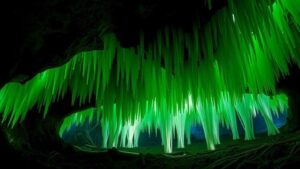Searching for the lost city of Tlosth, a rumored Maya stronghold deep in the Guatemalan jungle.
The Search for the Lost City of Tlosth: A Maya Stronghold in the Guatemalan Jungle
The quest to find the lost city of Tlosth, a rumored Maya stronghold, has captivated archaeologists, historians, and adventurers alike for decades. Nestled deep within the dense foliage of the Guatemalan jungle, Tlosth is said to have played a significant role in Maya civilization. This article explores the historical context of Tlosth, the methodologies used in its search, and the implications of its discovery.
Historical Context of Tlosth
The origins of Tlosth are shrouded in mystery, with most known information derived from fragmented historical records and oral traditions. Scholars speculate that Tlosth was established around 200 CE, during the height of the Maya civilization when various city-states thrived in what is now modern-day Guatemala, Mexico, Belize, and Honduras.
Historically, the Maya civilization was renowned for its advanced mathematics, astronomy, and architecture. The cities were intricately linked through trade and culture, with notable centers like Tikal and Calakmul dominating their respective regions.
Although Tlosth has not been officially documented by the Maya, references in local folklore and recent satellite imaging technology suggest that it could have been a significant urban center, complete with temples, plazas, and possibly even a ball court — typical features of Maya cities.
Modern Techniques in Archaeological Exploration
Recent technological advancements have emboldened researchers in their quest for Tlosth. Ground Penetrating Radar (GPR), Light Detection and Ranging (LiDAR), and satellite imagery have become crucial tools in uncovering lost cities beneath thick tree canopies. For example, LiDAR has proven effective in mapping vast areas, revealing structures that would otherwise remain hidden.
- In 2018, LiDAR technology helped identify over 60,000 ancient structures in Guatemala’s lowland jungles, highlighting the potential for undiscovered sites.
- The use of GPR allows archaeologists to visualize underground structures without excavation, preserving the integrity of the surrounding ecosystem.
These techniques not only expedite the search for Tlosth but also help establish a deeper understanding of the regions archaeological significance. By embracing non-invasive methods, researchers can mitigate the environmental impact while gathering extensive data.
Cultural Significance and Implications of Discovery
Uncovering Tlosth could offer profound insights into Maya culture, politics, and trade networks. The citys discovery would provide a clearer picture of how ancient societies were structured and how they interacted with one another. e are several reasons why Tlosth is of particular significance:
- Understanding of trade routes: The location of Tlosth could illuminate previously unknown trade routes connecting it to other Maya cities.
- Insight into societal hierarchy: The existence of monuments and large public spaces could reveal aspects of social stratification among the Maya.
- Preservation of history: As climate change continues to threaten archaeological sites around the world, locating and studying Tlosth could play a crucial role in preserving Maya heritage.
Challenges in Excavation and Preservation
Despite the exciting prospects, the search for Tlosth is not without challenges. The Guatemalan jungle is notorious for its dense vegetation, which complicates both exploration and excavation. Also, the regions biodiversity and ecologically sensitive areas necessitate careful navigation and consideration.
Also, political instability and illegal logging have posed threats to archaeological efforts, leading to a race against time to document possible sites like Tlosth. Collaborative efforts between government bodies, local communities, and international archaeological organizations are essential to ensure the preservation and responsible excavation of these sites.
Conclusion: The Future of Tlosth
The search for the lost city of Tlosth is emblematic of a broader quest to reclaim ancient histories and enhance our understanding of past civilizations. As archaeologists leverage modern technology and methodologies, the potential for discovering Tlosth grows stronger.
In pursuing Tlosth, not only do we seek to unearth historical treasures, but we also strive to respect and preserve the legacy of the Maya civilization. The implications of such discoveries extend well beyond academic circles, influencing cultural identity and fostering local pride.
As researchers continue their investigations, the ancient ruins of Tlosth remain a tantalizing mystery, symbolizing humanitys enduring fascination with the past. Ultimately, the journey to find Tlosth encourages us to reflect on our relationship with history and the importance of safeguarding it for future generations.


